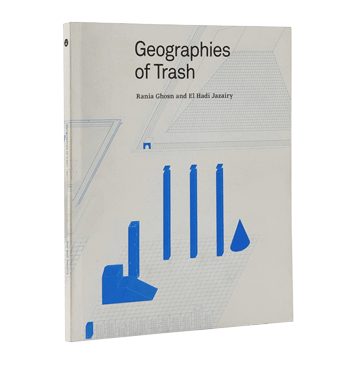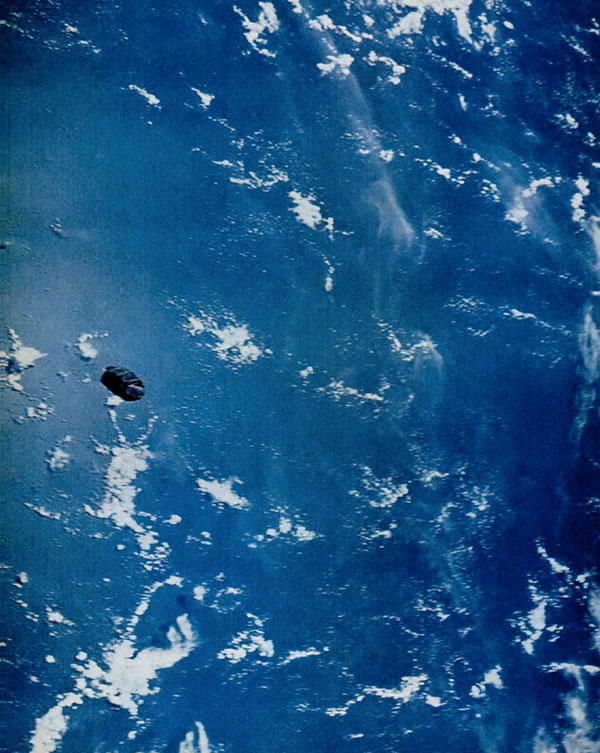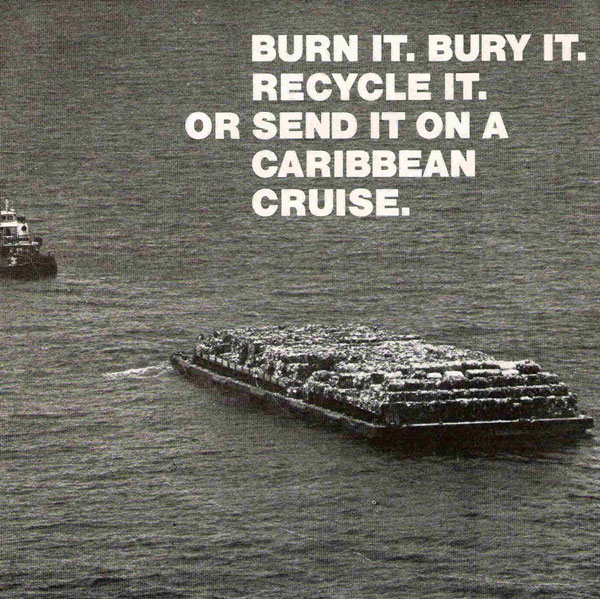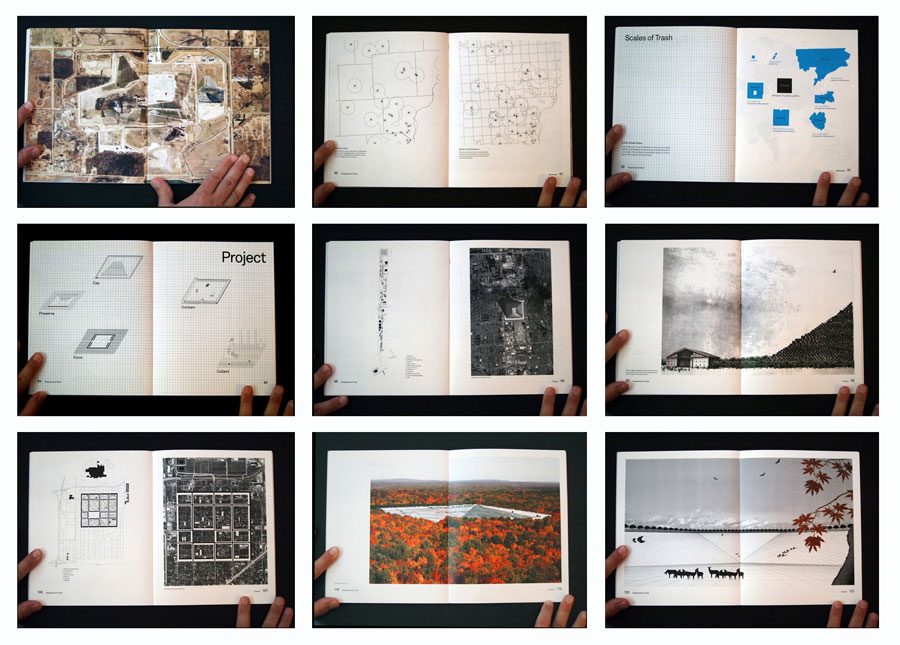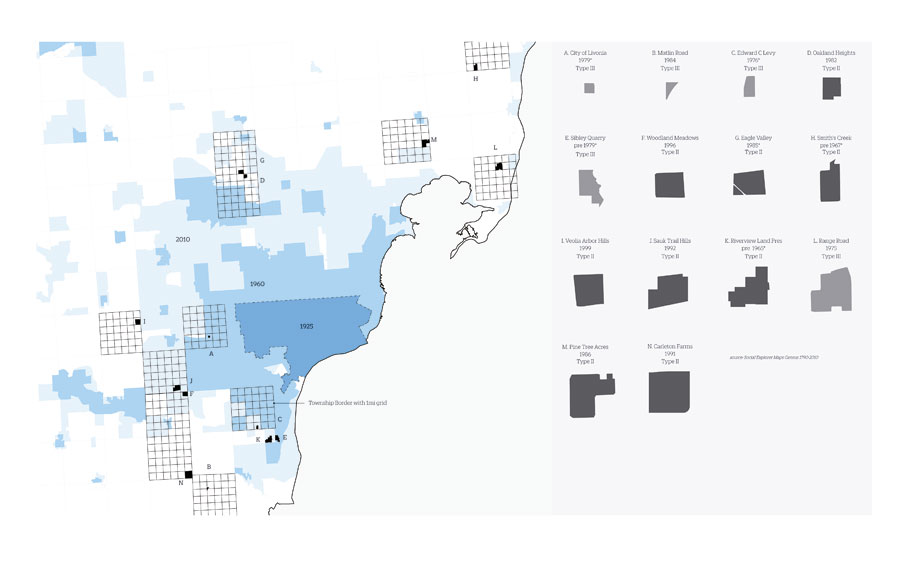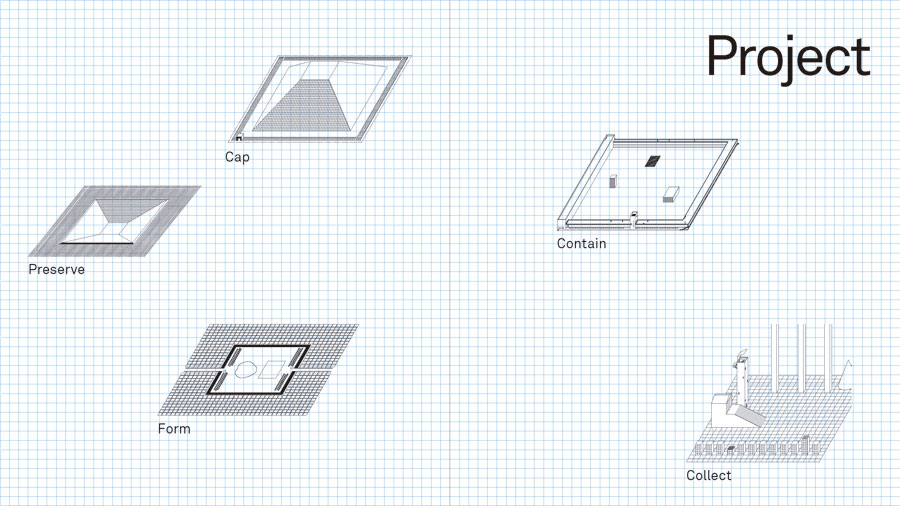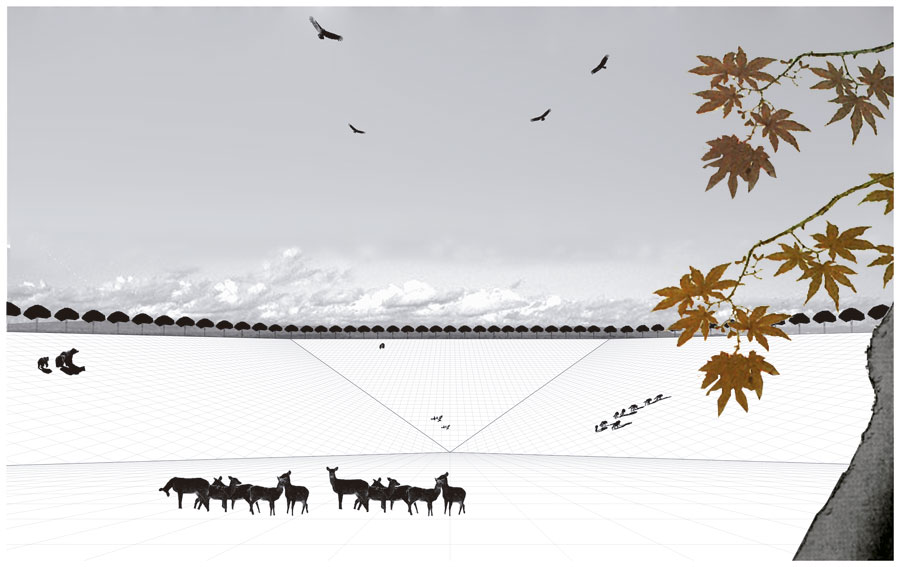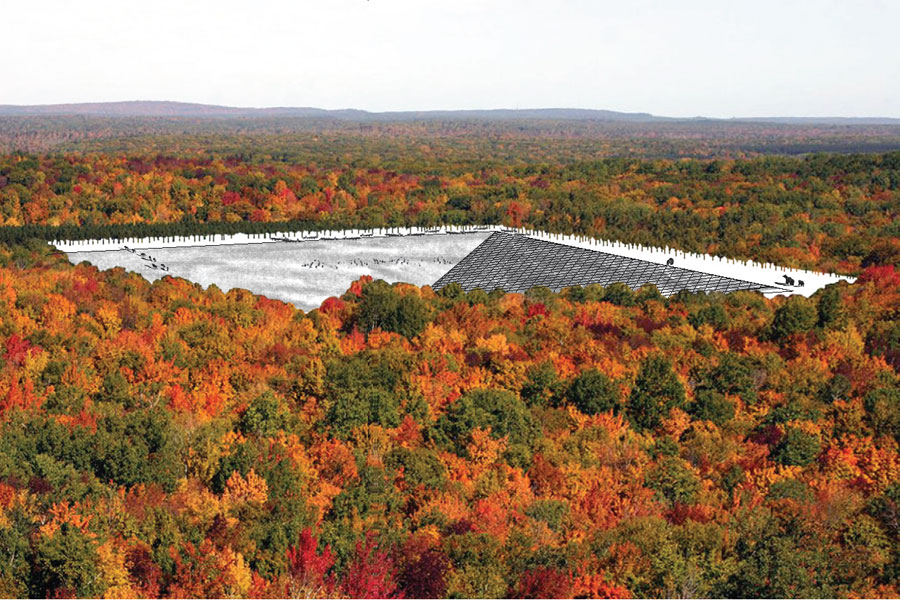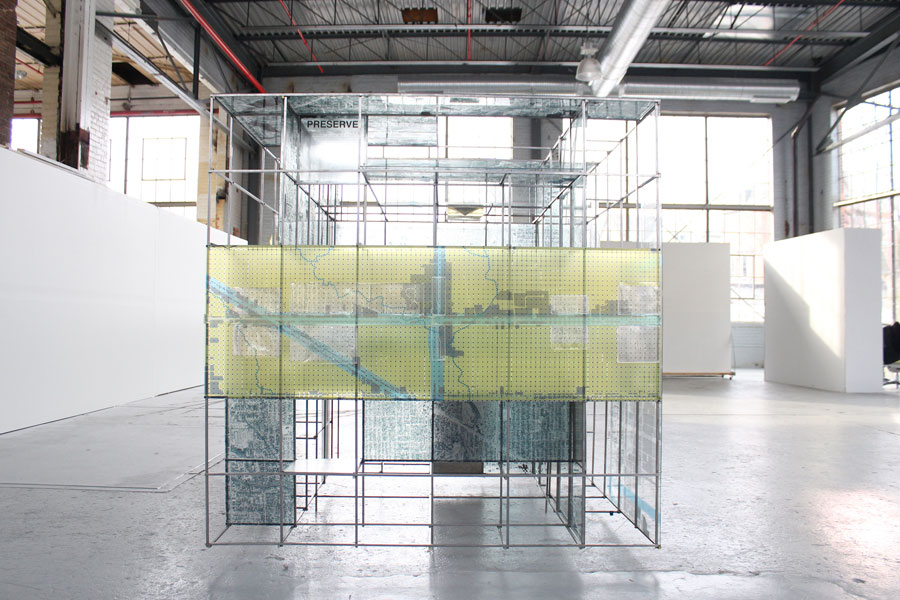In August 1966, LIFE Magazine published “Planet Earth by Dawn’s Early Light,” a photo-essay from the Gemini 10 shuttle flight. Capturing the earth from the most remote perspective to date, the final photograph of the series showed a single trash bag floating in space, a bag which contained objects that NASA intended to leave behind before the mission’s return to Earth.
At over a million feet above the planet’s surface, the plastic bag and its contents seemed categorically unrelated to trash on Earth, more of a time capsule than litter. Suspended in outer space, the bag might be construed as what anthropologist Mary Douglas refers to as “matter-out-of place,” that is, transgressive matter whose presence reaffirms the purity of its surroundings.[1] Yet the short essay that closed the article alerted readers to the “growing clutter of space trash” arguing that the more than 1,200 large objects in orbit could someday “cause a serious traffic problem in space.”[2] Not even the infinite volume of outer space was exempt from the perils of trash. As the editors of LIFE observed, just as cities had become clogged with animal waste and garbage, space trash could eventually become the proper concern of extraterrestrial street cleaners.
Trash bag floating in space, photo-essay from the Gemini 10 shuttle flight.
Similar concerns were also amassing on the ground. Although sanitation experts had increasingly rationalized the management and processing of waste in the first half of the twentieth century, garbage, and the question of its disposal continued to be a problem without a definitive solution. The federal government intervened with the Solid Waste Disposal Act of 1965, which was the first federal law to directly recognize the impact of the things we throw away on our environment. Yet this bill made no stipulations for the production of waste, and with both population and economic growth, garbage continued to pile up. In 1987, the Mobro 4000 barge infamously hauled three thousand tons of trash from New York to Belize and back until it was finally incinerated where it originated in New York. “Burn it, Bury it, Recycle it, or Send it on a Caribbean Cruise,” were former mayor of New York City Ed Koch’s suggestions for the fate of garbage in the wake of the Garbage Barge fiasco. The incident sparked nation-wide concern about an impending “garbage crisis,” in which the production of waste would continue to surpass our capacity to dispose of it. Trash was regarded as a dystopic symptom of consumer society. Rather than treating the cause however, the response was to further remove trash from sight, containing it in large-scale yet invisible from all but an aerial view mega-landfills. Once enclosed, odorless, and away, trash is matter-out-of-site. Yet in its larger ecosystem, trash is still matter-out-of-place: a vile residue whose exile confirms the health and fecundity of the society from which it was removed, and, paradoxically, by which it was produced.
Ed Koch’s suggestions for the Garbage Barge fiasco, former mayor of New York City.
Geographies of Trash
Geographies of Trash responds to the contemporary impetus for designers to examine and transform environments that extend far beyond the individual building in both scale and complexity, and to take on problems that had once been the domains of engineering or regional planning. Trash processing continues to operate at small scales. Taking out the trash is not only a household chore, but an integral part of waste management systems. However, as both the Gemini space mission and Mobro 4000 garbage barge demonstrate, garbage now circulates through huge territories, that at times even exceed the global scale. The transport of garbage and its places of origin, transfer, and final disposal create new geographies that both produce and are produced by urban development. Yet much urban analysis fails to understand, or even recognize, how garbage shapes our geographies. Garbage is not only an out-of-sight-out-of-mind entity for the public, but often has the same status for architects, urban planners, and urban theorists as well.
The mandate for “clean” urbanism has rested on cities’ capacity to divest themselves of the environmental costs of their rapidly expanding consumer culture, relegating responsibility for the inevitable “dirty” waste products to political and geographic entities beyond city jurisdictions, what David Harvey has referred to as an “externality field.”[3] The rise of environmentalist constituencies in the 1960s began to account for waste networks by wrapping the urban process in the environmental and economic externalities that have always accompanied it. Such worldviews brought to public consciousness the realization that there is no outside in which the unwanted consequences of our collective actions could be allowed to linger and disappear from view, that there was “no zone of reality in which we could casually rid ourselves of the consequence of human political, industrial, and economic life.”[4] By examining the relational entanglement of spaces hitherto out of urban representation, the environmentalist imagination has thus expanded the field of interests to account for the material, political, and scalar attributes of the urban process.
Through historical research, data visualization, and speculative design, Geographies of Trash represents the banished material and spaces of garbage. Designed to operate invisibly, with as little public presence as possible, waste management networks and infrastructures have traditionally been outside the purview of architectural and environmental designers. In response to the oversight of garbage by design practices, Geographies of Trash represents the waste disposal system in Michigan and proposes five strategies of trash-formation for the territorial grid. The research was developed within the context of Research on the City, an initiative at the University of Michigan Taubman College of Architecture and Urban Planning to stimulate interdisciplinary research on the challenges on the contemporary city. Geographies of Trash extends the framework of Research on the City to that of the urban project at a geographic scale.
The design research methodology proceeded through the interrelated acts of representing and projecting geographies of trash. We take inspiration from the Greek word geōgraphia, literally meaning the writing of the earth. (gē ‘earth’ + –graphia ‘writing) Geographies of Trash writes, represents, and rewrites, through speculative projects, the interactions between trash, space, and urban environments. Collectively, the four sections of this book – Construct, Represent, Form, and Assemble – seek to bring trash into public view, public consciousness, and public controversies.
Construct conceptualizes and historicizes the relationship between trash and space, examining historical changes in the protocols waste management at a variety of sites for garbage processing: the street, the curb, incinerators, transfer stations, and sanitary landfills.
Represent maps the material, political, and economic geographies of waste in Michigan. Borrowing from Bruno Latour’s definition of a network as “a mode of inquiry that learns to list… the unexpected beings necessary for any entity to exist,” these visualizations of the facilities, roadways, land use plans, equipment, densities, and spaces of garbage processing enumerate the invisible networks of trash, making formal representations of what is necessary for the ecosystem of trash to exist.[5] Our understanding of trash is transformed once it is place into and mapped onto a vast network of technologies, sites, actors, and legislations. Represent contends first, that trash sites are not matter-out-of-place, but rather are territorially embedded, inscribed within township and county grids, and second, that in turn, trash sites produce their own boundaries in space.
Project operationalizes our mappings of the network of trash to propose five site-specific yet repeatable architectural strategies which, working at various scales, reintegrate waste management into the city. The specificity of the site tests the realism of each scheme while the generic potential of the form allows the projects to be imagined throughout the American territorial grid. The five discrete projects, CAP, collect, contain, preserve, and form, create alternative aesthetics and forms for landfilling, recycling, burning, re-using and reducing. The five projects engage issues implicit in the socialization of trash, such as monumentality, value, scales of management, social relations, ecology, and geography. The section explores design’s agency to prompt disciplinary and public debates on geographies of urban systems.
CAP
Landfills have been evicted from dense urban development. Instead, they are located in urban peripheries along major highway arteries and buried beneath a swath of green carpet. CAP gives form to the components of landfill operations in monumental architecture. The project rationalizes the process of landfilling – cell construction, material stacking and truck circulation – to give shape to a ziggurat of trash cells. Culminating the twenty-mile automotive Mound Road Corridor, the project serves as a monument to the decentralizing and wasteful forces of Detroit’s urbanization. By giving visible form to the landfill, CAP reclaims the infrastructure of waste as a project of civic pride.
Collect
The revenue of waste operators is gained from discerning objects that are still valuable from those that are not. Although individual producers of trash may readily hand over their garbage with no expectation for remuneration, particularly with the advent of recycling programs, various entities in the waste management system have the opportunity to extract value from someone else’s trash, often several times over. For example, landfills can both charge dumpling fees and collect on saleable materials that will later be recycled, and then sold again to manufacturers.
As designers, can we imagine a recycling process that reclaims the economic value of recycling for residents of the city, particularly at a moment when Detroit is defined by its loss of population, revenue, and urban services? Collect returns the surplus value of recycling to the urban neighborhood unit. The project converts the Russell Woods neighborhood park into a ground for the collection, sorting, and redistribution of solid waste, transforming the neighborhood waste economy into a collective and socially enriching project.
Contain
Trash is hauled over long distances, usually from more affluent areas to less privileged ones. What would happen if we placed limitations on the transit of garbage, such that each community was responsible for the waste it produced? What kinds of architectures of trash would emerge if waste could not simply be carried away? Can waste management be rethought as a productive and desirable typology within urban environment?
Contain internalizes composting and burning within the courtyard of perimeter-building types. Detroit’s shrinking population has emptied out much of the city, yet its neighborhoods remain as cohesive, albeit less dense, enclaves. This project deploys trash management as a redevelopment strategy for the Poletown East neighborhood, which historically has been a location for grazing, orchards, and numerous immigrant communities. Contain allows Poletown to rebuild itself from the waste it manages. Byproducts of low-tech composting are used to create soft surfaces of communal spaces within the block, such as lawns, fields, and gardens. The bottom ash of high-tech burning is used as aggregate in the construction of hard surfaces, such as pavement and concrete, for a perimeter of housing blocks. Eventually, the project eliminates the distinction between waste and resources in the urban enclave.
Preserve
Dumping regulations place no liability on industrial and chemical producers whose products may end up in landfills. Since the 1980s, landfills have been lined with low-density polyethylene, the same material used to make the plastic trash bag, to keep them from leaching fetid liquids into lakes, streams, and ground water, and to seal the site forever. The life of polyethylene extends well beyond the time period for which states are required to maintain and monitor landfills after closure. But after the monitoring period is over, if the liner starts to decompose, it is unclear whether the state or private corporations are legally liable for the leaching of waste. This perpetual deferral of liability poses a legal hurdle to the ecological remediation of trash sites. Can we imagine alternative landfills that themselves employ sustainable strategies of waste management, rather than those with an indeterminate lifespan?
A nation-wide study from 1950 found that most cities in the Detroit Metropolitan region employed hogs for disposing of garbage either by contract to independent entrepreneurs or by operating their own piggeries. Along the urban periphery, such urban and rural trash was combined with soil to produce a fertile duff.[6] Preserve curates ecologies by engineering the operation and lifecycle of a landfill. Replacing a highly engineered image of nature with highly engineered mechanisms for the augmentation of nature, the project transforms a golf course within the Indian Springs Nature Preserve at the extents of Detroit’s outer city into a renewable landfill. In contrast to landscape practices that promote ecological consciousness through the aesthetic and ecological reclamation of former landfills, such Fresh Kills Park, this proposal seeks to extend the life of a landfill in perpetuity, by placing liability on industrial and chemical operators for the toxicity of their waste before it arrives at the landfill. Within the site, the liner is replaced by decomposition strategies and remediation processes that allow trash to become part of the preserve’s ecology. Within its perimeter, Preserve attracts bears and a multitude of ecologies all while producing fertile ground for urban agriculture in Detroit.
Form
Michigan capitalizes on its location at the geographic center of the Great Lakes Region, as well as its rock-bottom landfilling prices, low tipping fees, and lax environmental regulations. Over the next two decades, most of the landfills in Michigan’s densest urban areas will have reached their maximum holding capacity. Rather than waiting for another garbage crisis, how can we design for future landfill obsolescence now? How can we transform the large number of landfills in the urbanized corridor between Detroit and Lake Michigan scheduled to reach capacity in the near future into productive sites? Can capped landfills serve as a new model of urbanism in which post-technological systems are incorporated at conception?
Form create a continuous waste management system in a two mile-wide strip along an urbanized corridor, beginning in Detroit and extending westward along 8 Mile Road, running along the baseline of the Michigan’s original Public Land Survey undertaken in 1805. Rather than perpetuating existing siting logics which locate landfills at the peripheries of Michigan’s six-mile townships, the project engages geographical features, such as topographical changes, waterways, motorways, forests, towns, and so forth, to form an archipelago of platforms within a continuous landfill stretching from Detroit to Lake Michigan.
Assemble
Design’s capacity to make abstract concerns visible allows the architect to reconfigure the aesthetic and political assumptions of urban waste management. Along with this research publication, a 6’x6’x6’ cube installation collects the five projects to form an object in space. Representing the territory of a Michigan township, each side of the cube features a satellite image of the project’s general vicinity, printed on acrylic, an aluminum etching of the project’s specific site, and a yellow resin cast model of the proposed project. The assembly of projects aspires to shift public debates from their focus on what Bruno Latour calls matters-of-fact: that is, positivist solutions to “garbage crises” which continue to insist that garbage must be kept out of sight as a factually repugnant entity.[7] Instead, Assemble seeks to draw attention to Latour’s matters-of-concern: arguments that accept the fact that trash creates problems that we must address, yet seeks creative, alternative, and realist solutions through the grounding of research and design in political, economic, and geographic specificities.
Conclusion
This research on the geographic dimension of trash argues that future strategies for the disposal of our waste should do more than seek technological solutions. By examining the infrastructures of waste management and their spatial arrangements rather than simply garbage technologies, this book identifies a host of unexplored sites of trash processing where architects, as specialists in spatial organization and speculation, can intervene. Given that the relentless strategy to erase trash from the public view has gone hand-in-hand with more and more severe “garbage crises,” we propose using architecture and design to reverse this trend, bringing trash into the public realm both visually and as a subject of debate. That is to say, Geographies of Trash calls on architects to place garbage in sight, context and form.
